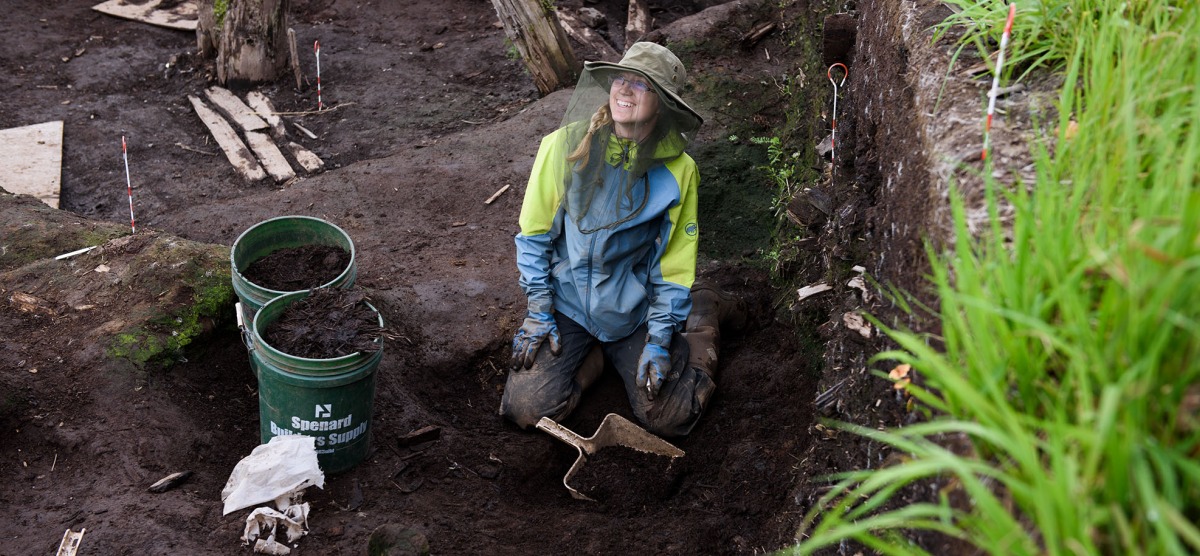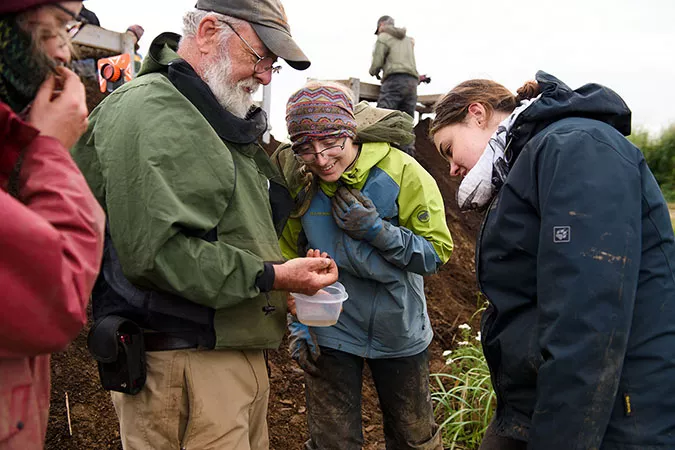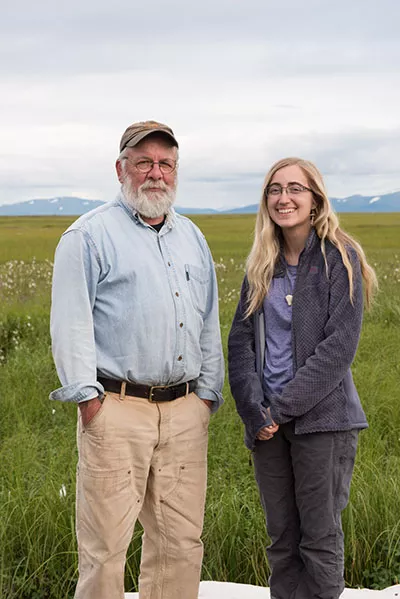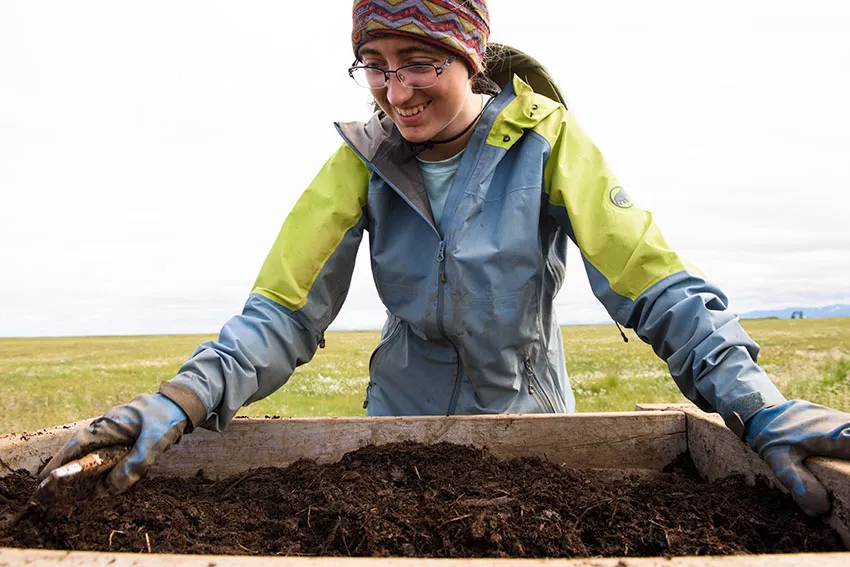
Way Up North
Bryn Mawr connections on an archeological dig in Alaska.
In the Yukon-Kuskokwim delta region of southwestern Alaska, archaeologists are excavating a pre-contact site called Nunalleq, which served as a winter village for the Yup’ik people. Over the centuries, the frozen tundra proved an ideal medium for the preservation of artifacts—including grass ropes, wooden and stone objects, even head lice—but today Nunalleq is threatened by melting permafrost and rising sea levels along the Bering Sea.
Rick Knecht, M.A. ’85, Ph.D. ’95 (both in Anthropology), leads the expedition and, over time, his team has located what they believe was a men’s house, excavated an entire house pit, and discovered evidence of a 400-year-old attack. His fascination with the region flourished at Bryn Mawr; his dissertation focused on the prehistory of the Alutiiq people, and in 2003, he and Bryn Mawr Professor of Anthropology Rick Davis excavated a 3,000-year-old site on Unalaska Island. This summer, Knecht was joined by another Mawrter, Lauren Phillips ’19. Phillips, an Anthropology major and Museum Studies minor, sent this dispatch from the field.
I am participating in the most remarkable archaeological field school at Nunalleq, a nearly 500-year-old sod house of the Yupik people. Extraordinary artifacts, such as wooden masks, ornate ivory carvings, intricate tools, and woven grass objects have been found in unparalleled numbers, and ... at the Nunalleq Archaeological Field School, we are rushing to save the frozen, well-preserved artifacts from both weather and sea. Moreover, we are immersed in the living Yupik culture within the village, Quinhagak, as they host us during our excavation season.
The site is two houses on top of the other, one from c. 1670 and the bottom from c. 1540. Most likely, the same family continued to rebuild atop their ancestors’ house, as suggested by the similarity of the family ownership marks on various artifacts.
As head of the excavation Dr. Rick Knecht stated as he examined a grass woven mat, “This grass was cut when Shakespeare walked the Earth.”
Some personal discoveries I made during the dig include an ivory carving, a baleen woven mat, multiple wooden dolls, a toy boat, a mask attachment, an ulu handle and blade (found separately), and a bent-wood bowl.
One of the village elders, John Smith, visits the dig site and the lab daily and provides insights into the uncovered objects. John told us how his grandfather would carve little dolls to occupy his hands while telling stories. Whenever John holds carved tools, handles, objects, bowls, and jewelry, he tells us about how they’re made and what they were used for and discusses the meaning behind the artifacts his ancestors created. ...
My favorite find that I uncovered is a beautifully carved ivory toggle shaped as the head of a smiling caribou from c. 1540. John carries on his family’s carving techniques by re-creating pieces from the Nunalleq site for us. He re-created a replica of the caribou toggle for me to wear and told me about how precisely his ancestors carved the curvature of the toggle. He described the difficulty of re-creating the smiling caribou even with modern tools.
We take part in the daily lives of Yup’ik people in Quinhagak. We go fishing for salmon for dinner, artists frequently show their art and compare it to the Nunalleq finds, John tells us about his childhood and about the beings that lived with his ancestors and still live with us even as we dig.
Published on: 11/04/2018


